:
The Alpinist reports that "Fowler had written an email on November 7 that read, "We're in the town of Litang for a few days.... getting ready for one more trip into the hills. We just got back from attempting a peak I tried in '96 doing a film. Didn't make it that time due to complications with the film crew. This time the peak was a lot less icy (global warming?)... we got near the top but backed off due to scary conditions—thin snow over rock slabs. Had a blast climbing as far as we did, though. 'We did our best with dying,' to quote Chris. Now off to one more different area to try a 6000-meter peak and a smaller one, then traveling back doing the tourist thing."
"View from the north of Gurla Mandhata's North face at sunrise from Darchen, the start of the Mount Kailash kora. The photo was taken on September 10, 2006, just before we made the first American ascent of the standard route via the Chaglung'mlungha Glacier. Photo by Jake Norton / MountainWorld Photography.
:
Gurla Mandhata is the highest peak in the remote Gurla range, located in western Tibet, 100km south of sacred mountain Kailash. The landscape around this peak includes nomad inhabited high plains, huge turquoise lakes, and the neighboring Kailash range to the north. Gurla Mandhata offers extremely wide variety of terrain, ranging from gradual walk-ups along the NE-ridge to difficult mixed routes up the vertical North face.
:
This North face was for the first time attempted in 1997, by a team from the USA. The Colorado mountainguide Charlie Fowler almost got killed when he fell 1500ft!!!off the North Face on the 1997 first and failed attempt of the N face. Thera are two ways of reaching Gurla Mandhata: A four day drive from Lhasa, or a four to five day from Kashgar, along the extremely remote Tibet Xinjiang highway. " http://www.peakware.com/peaks.html?pk=976
"Charlie Fowler is a professional photographer, filmmaker, writer and trip leader from Norwood, Colorado. An avid climber since 1968, he has ascended many of the world's most difficult peaks with the world's best climbers, including my brother, desert climber Kyle Copeland (Diamond Star Halo, Longs Peak, CO '86 FA also with Joe Burke).
:
Charlie has explored and pioneered new routes on rock, ice and mountains in the Andes, the Himalaya, North America and Europe. Recent climbs include 8000 meter peaks Cho Oyu, Everest and Shishapangma in Tibet.
:
Charlie has trekked and explored some of the planet's most remote and scenic spots, and is an acknowledged expert in risk management and leadership.
:
Charlie was born in North Carolina, but grew up in Virginia. He graduated from the University of Virginia in 1975, with a degree in Environmental Science. He moved to Boulder, Colorado, where he lived for the next twelve years. During his time in Boulder he worked variously as a computer programmer, carpenter, and as a mountain guide and trip organizer.
:
Since the mid-80's he has been self-employed, leading numerous trips overseas. He became a member of the American Mountain Guides Association in 1986 and became certified; He has taught and help establish many courses for the AMGA and served as an assessor on AMGA certification exams in the Rock and Alpine arenas.
:
Since the early 80's he has had photographs published in many books, magazines and catalogs. He has also written several articles for magazines and journals, as well as writing and publishing three local climbing guidebooks. Today, writing and photography is his main business, supplemented by guiding.
:
He moved to southwest Colorado in 1987, first to Telluride then to Norwood in '92, where he has lived ever since. Currently, he travels extensively, exploring remote areas of the Himalaya and Patagonia mostly, taking a lot of notes and pictures along the way.
:
He has been involved with filmmaking for many years. Among other projects, he worked on National Geographic's "Ice Climb" as a guide and rigger; he did "Rock and Road" and "The Kingdom of Muli" for American Adventure productions; several episodes of "High Country Climber" for the Outdoor Life Network. He also appeared in, and helped film, John Catto's award-winning "La Escoba de Dios".
:
Charlie went to Mt. Everest in the spring of 2002, guiding a trip for Mountain Madness. Later in the year he and Christine Boskoff traveled to Pakistan to attempt K2.
:
The American Alpine Club awarded Charlie the Robert and Miriam Underhill Award for outstanding mountaineering achievement in 2004. In 2005 Charlie and Damon Johnston co-founded Mountain World Media LLC, a publishing company."
http://www.charliefowler.com/cf_info.html
:
See Also Charlie on the Loose: http://charlieontheloose.blogspot.com/
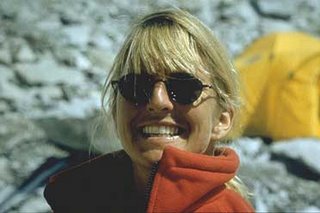 "Christine Feld Boskoff is known as America’s leading female alpinist and CEO of Mountain Madness, (an adventure travel and expedition operator.); in actuality she has climbed the most summits of any woman alive, from any country. Christine, a Wisconsin native was born in 1967; in 1993 she took a two day climbing course. Four years later she became the first woman from North America to reach the summit of Lhotse. In 2000 she led a successful expedition to the summit of Mount Everest.
"Christine Feld Boskoff is known as America’s leading female alpinist and CEO of Mountain Madness, (an adventure travel and expedition operator.); in actuality she has climbed the most summits of any woman alive, from any country. Christine, a Wisconsin native was born in 1967; in 1993 she took a two day climbing course. Four years later she became the first woman from North America to reach the summit of Lhotse. In 2000 she led a successful expedition to the summit of Mount Everest.:
The first mountain Christine climbed was in the Bolivian Andes, 17,000ft Tariji. After this first success she began organizing climbing expeditions to Africa, Mexico, Europe and North America. In 1994 she made her first trip to Asia and climbed Ama Dablam. In 1997 Christine bought the name, Mountain Madness. Mountain Madness is a company which was started by Scott Fisher; however Scott lost his life while guiding clients to the summit of Everest in 1996. Christine has turned Mountain Madness into one of America’s finest climbing schools and 8000m expedition leaders.
:
Christine has been a member of eight 8000m expeditions, six of which were successful in reaching the summits. She has reached the top of Shishapangma, Everest, Gasherbrum II, Lhotse, Cho Oyu, and Broad Peak. Other accomplishments include Jilliper North and Ganaio in Pakistan; she has made winter ascents of Mt. Angor, Mt. Kilimanjaro and Mt. Kenya in Africa, she has climbed Mt. Blanc and the Matterhorn in Europe and climbed extensively throughout North and South America.
:
She is the only American woman alive to have reached the summit of 6 8000 Meter peaks. She also has an extensive record of unexplored first ascents, primarily in Tibet. Committed to living her dreams, Christine will be guiding Cho Oyu and attempting to climb K2 in 2002. She was the first North American woman to summit Lhotse.
:
She has taken part in 9 8000 meter expeditions, being successful on 6, including Everest, when she summitted from the S. Col/SE Ridge, on May 24, 2000 (a Mountain Madness expedition with Peter Habeler). Christine lives in Seattle, Washington.
:
Just the Facts: Christine Boskoff: American born 9/7/67, with her 6 8000M summits is now tied for second all time for women. Christine has summitted Broad Peak (8/13/95), Cho Oyu (9/27/96), Lhotse (5/26/97), Gasherbrum II (8/19/99), Everest (5/24/00), and [the main TRUE summit] Shishapangma on 10/10/00 by the British route on the Southwest face."
:
Mountain Madness: http://www.mountainmadness.com/
:
Quoted from Everest News.com
http://www.everestnews.com/stories2006/missing14162006.htrm/
"When Fowler and Boskoff failed to return to the United States December 4, a cautionary note was raised among friends. In the time since, the concern has focused on developing a search team and strategy. American climber Jon Otto, who has extensive experience in the area, has been retained to lead the efforts.
:
The search leaders sent a team to Litang on December 14 to investigate the town for clues about the Ameicans, but found no information regarding any stays in local hotels.
:
It is possible Fowler and Boskoff stayed with a family or in a farmer's field; Boskoff had also cited a monastery at the base of the 6200-meter Genyen, so searchers are also considering this location.
:
The U.S. Consulate General has asked the provincial Foreign Affairs Office to coordinate a search with the local foreign affairs office and local police. They have sent two groups around the town of Litang to ask if anyone remembers seeing the Americans, and are checking with hostels, monasteries, bus stations, and the Litang Climbing Association.
:
They have also requested more specific information about their travel plans and when they would gone to climb the mountain.
:
As of December 11, the weather was reported as -10 degrees C, with no recent unusual weather activity. The chief of Zhangla, the last village before Genyen, was contacted December 9, but said that no climbers had been known to go recently to Genyen.
:
The Sichuan Mountaineering and the Ganzi Mountaineering associations have also been contacted, but as no climbers had registered for a climbing permit, no information was forthcoming from this source.
:
As friends wrote this morning, "Lets hope [Chris and Charlie] are happily seeking nirvana and drinking chang with Buddhist monks in [the monastery at head of the Genyan valley], waiting for the weather to break."
:
Quoted from The Alpinist
http://www.alpinist.com/doc/ALP18/newswire-charlie-fowler-christine-boskoff-missing-tibet
:
Damon Johnston, Charlie's climbing friend and publishing partner, has these below details and more at: Fowler-Boskoff Search Engine: http://fowlerboskoff.blogspot.com/
YOUR DONATIONS ARE URGENTLY NEEDED!
"Mountainfilm In Telluride has opened a new account under its non-profit umbrella to accept tax deductible donations for the Fowler-Boskoff search effort.
:
The account is titled The Fowler-Boskoff Search Fund.
:
It is a Wells Fargo account and the account number is 1736253632.
:
All checks should be made to Mountainfilm in order to qualify for tax deductibility.
:
Checks can be deposited at the Wells Fargo drop box next to its ATM in the Wintercrown Building breezeway or at the Wells Fargo branch in Mountain Village.
:
Checks should reference the account name and/or number.Checks will also be accepted at the Mountainfilm office at 109 East Colorado Avenue (above The Toggery) or may be mailed to Mountainfilm, PO Box 1088, Telluride CO 81435.
:
The Wells Fargo routing code for in-coming wires to the Fowler-Boskoff Search Fund is 121000248."
:
Please help them any way you can.
: 
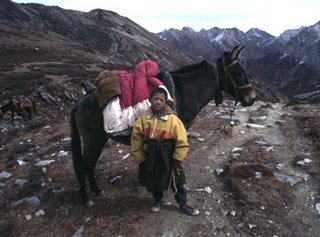
Charlie's Take on The Tibetans
"Tibet is the highest and most mountainous region in the world, so it's no wonder mountaineers, like myself, have been drawn to the area for centuries. Having wandered about the Tibetan plateau for several years now, I'm learning some important lessons.
For one, Tibet is not so much a political entity, but a unique geographic region. It is inhabited by distinct peoples who are united by language, culture, religions and a shared history. A region which transcends political boundaries - the people who live here had no say in drawing up national frontiers and hardly any allegiance, politically or culturally, to the foreignors who did.
A region where the many of the world's highest and wildest mountains are found along these borders; and where the climbing is as interesting and varied as the landscape and people. Given their environment, it's no surprise that Tibetans are a tough, resourceful people.
Anthropologists continue to debate their origins , but to the traveller some things are obvious - the Tibetans are not a race, but a diverse collection from central asian stock. This diversity is reflected in the culture - not all Tibetans are Buddhist as is commonly supposed; Islam is widespread, mostly in the west, and Bon, the animist religion which preceeded both, is still commonly practiced, predominately in the east.
Situated between the two great and ancient cultures of India and China, Tibet has had a long and turbulent history. United politically only rarely, Tibetans often expanded into nearby states, and in turn these nations invaded Tibet. The Tibetan plateau has now become incorporated into China, India, Pakistan, Nepal, Burma and Bhutan.
The Chinese invasion and occupation of the greater portion of Tibet in 1950 was one of the most disruptive events in recent history. Not only was an ancient culture threatened, but borders were closed, severely impacting the economies of neighboring countries; many thousands of refugees were created, and the on-going instability of central and south Asia was further exacerbated.
A vast array of problems was created which exist to this day. For the Tibetan people, it means that they are largely cut off from the outside world , second class citizens in their own country. Historically, climbers had been among the earliest explorers of remote Tibet. Now, the few who trickle in remain one of the few contacts Tibetans have with the free world.
It has been estimated that there are approximately 3000 peaks over 6000 meters on the Tibetan plateau, and another 70 peaks over 7000meters. The vast majority of these summits are unclimbed, the ranges where they are found, unexplored.
First unified in the 7th century ad (a period which coincides with the arrival of Buddhism), Tibetans traditionally divided their mountain country into three provinces: Utsang, the western and central highlands, is bound by the Kunlun Range to the north, the Karakoram to the west and the great Himalayan barrier to the south. To the northeast, are the great lakes plains of Amdo, crowned by Amnye Machen . And in the southeast, Kham. A land of deep valleys and rugged mountains , it is culturally the richest part of Tibet, as well as being the most populuous province. The mountains of Kham , largely unknown to outsiders, offer vast opportunities for the adventurous climber today.
Travelling in Tibet , I've been struck by the wealth of climbing to be done - from bouldering to crags to the highest alpine faces. But more than that, it the Tibetan people who draw me back; a people who treat mountains with respect, often reverence. Their generosity, resilience and good humor under difficult circumstances is impressive.
The Dalai Lama has proposed that the Tibetan Plateau be de-militarized and designated a "Zone of Peace". It is an idea that helps everyone - stability in the region will bring prosperity to those who live there; and for visitors a chance to experience a rare land and people.The situation in Tibet is complex, defying simple answers. I've only touched on a few of the many issues here.
For those interested in learning more, I'd suggest these sources as a start:
Recent history:A History of Modern Tibet, 1913 - 1951.
The Demise of the Lamaist State Melvyn Goldestein, University of California Press, 1989
Dragon in the Land of Snows. A History of Modern Tibet since 1947 Tsering Shakya, Pimlico, 1999
The Official website of the Tibetan Government-in-Exile: http://www.tibet.com
The US State Dept. website: http://www.state.gov . It has lots of great info and links for any travelling climber.
The annual Human Rights Reports, issued for most countries, have concise, objective background material on the political situations of nations - issues that direct affect climbers.
Travel: Tibet Handbook, A Pilgrimage Guide, Victor Chan, Moon Publications, 1994.
Tibet Handbook, with Bhutan, Gyurme Dorje, Footprint Handbooks, 1998.
Culture:The Sacred Life of Tibet, Keith Dowman, Thorsons, 1997
Of special interest to climbers:The American Alpine Journal, published annually by the American Alpine Club.
The Himalayan Journal, published annually by the Himalayan Club (India)A Guide to Climbing in China, Chinese Mountaineering Association, 1992.
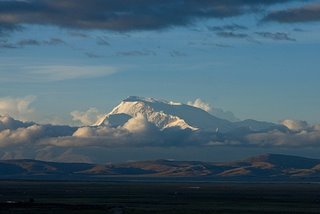


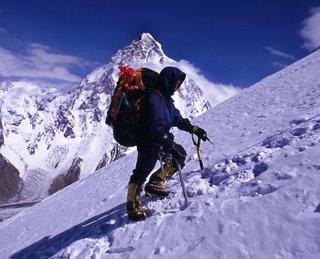
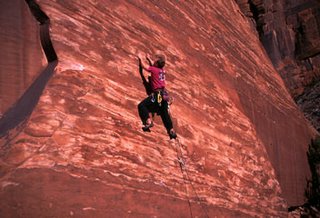
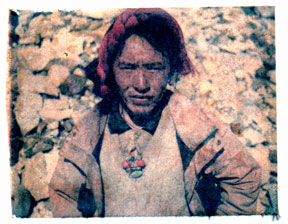

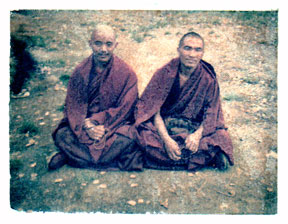
No comments:
Post a Comment